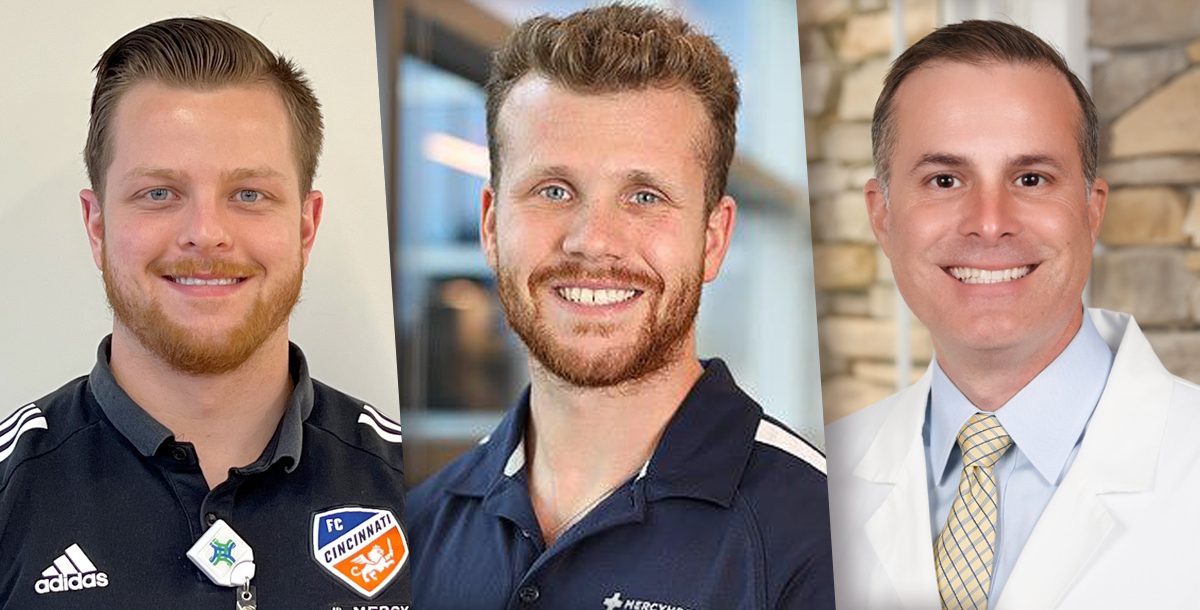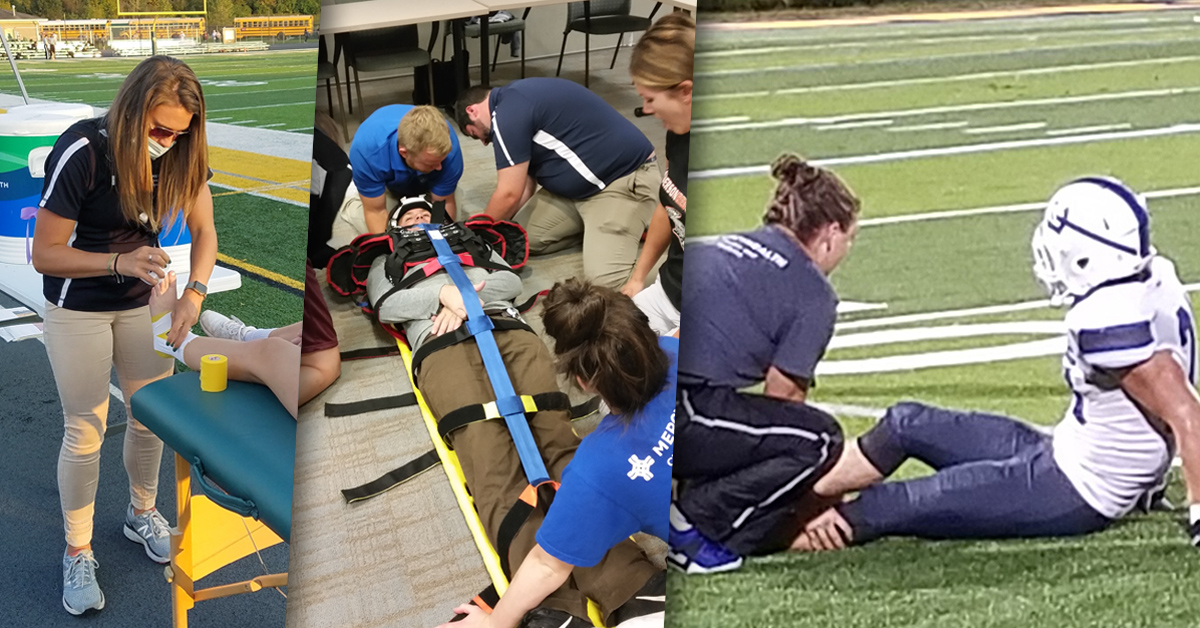Warm weather means more time outside to play recreational sports such as baseball, tennis, lacrosse, volleyball and football. However, with this increase in activity can come some unintended consequences.
It’s not surprising that one common injury during the warmer months is a throwing injury.
“These injuries can be in the shoulder and elbow, including shoulder rotator cuff injuries, labral tears, muscle strains, biceps tendonitis and tears, internal impingement, glenohumeral internal rotation deficits, scapular dysfunction, shoulder instability, thrower’s elbow, elbow tendonitis and elbow UCL sprains,” Michael S. Laidlaw, MD, orthopedic sports medicine surgeon at Mercy Health — Orthopedics and Sports Medicine, Anderson, (pictured above, right) explains. “This can happen to anyone that participates in repetitive overuse of the shoulder and elbow, especially with sports requiring overhead throwing.”
Dr. Laidlaw adds, “the shoulder joint is one of the most mobile joints in the body because of its relative lack of bony constraints. It requires soft tissue restraints, ligaments and rotator cuff tendons to provide additional stability as well as support the shoulder’s normal mechanics. Overuse or accidents can lead to injury of these structures, resulting in dysfunction and pain.”
So, what are some warning signs that you might have a throwing injury that needs medical attention?
- Pain during sporting activities or daily living
- Stiffness
- Loss of strength
- Loss of speed during pitching or overhead swinging
- Decreases in range of motion
The first step to treating shoulder pain includes rest, heat, ice or anti-inflammatory and pain-relieving medicine including aspirin or ibuprofen.
“If pain or dysfunction persists, no at-home treatment can match scheduling a doctor’s visit,” Dr. Laidlaw says. “It allows a full assessment of the injury as well as an individualized treatment plan to return to the activities you enjoy.”
At Mercy Health, we are proud to offer plenty of treatment options, including physical therapy, medication, injection therapy and advanced imaging services, such as MRI/CT scans, to diagnose and determine next steps in caring for your injury.
To avoid further injury or getting a new injury, our athletic trainers and physical therapists have specially designed programs to help you recover after a throwing injury diagnosis. Hughston Kirby, PT (pictured above, left) and Tyler Hopper, AT (pictured above, middle) work alongside providers like Dr. Laidlaw to help with the next steps. We asked for their guidance on the care that our ministry offers.
First off, if it is a student athlete that is injured, they would first be seen by the athletic trainer at their school and then referred to an orthopedic sports medicine specialist.
“From there, the athlete would be referred to physical therapy for the acute rehabilitation stage where range of motion and strengthening exercises would be initiated,” Tyler explains. “Once the athlete is cleared from physical therapy, they are referred to our post-therapy GAP (goals, achievement and performance) program.”
“The GAP program has long been the gold standard of post-therapy care in this area,” Hughston adds. “During this time, the patient will likely undergo a video-recorded throwing assessment, with corrections where necessary as well as a return-to-throwing program guided by our athletic trainer.”
During physical therapy, our team will also work with you to break bad habits that can also lead to throwing and arm injuries.
Several key factors have been identified as potentially contributing to the prevalence of throwing injuries. These include:
- limited rotation or muscular control of the throwing arm, which can lead to over-reliance on other tissues for mobility or control
- poor core control and mobility down the kinetic chain from the hips to the ankles
- throwers who are tight with internal rotation on their throwing shoulder, which can lead to an increase in force through the shoulder during the deceleration phase
- throwers that are weak with their external rotator cuff and scapular stabilizing muscles
There are also several mechanical flaws that we see, the most common being that the elbow joint is not at the proper angle which can increase stress to the ulnar collateral ligament. An athlete not striding in the right direction can cause the hips to be too closed or open and increase stress to the arm. And finally, the glove hand/arm opening too soon, which causes the shoulder to fly open can, also cause injuries.
Once these bad habits are identified, it’s time to improve the patient’s mechanics to prevent future injury. A videotaped assessment looking at the athlete from four different angles is used to fully assess throwing mechanics.
“This is used as an educational tool to help the athlete see what they are doing wrong to help facilitate their recovery by improving their mechanics,” Tyler says.
Also, the video includes footage of the patient’s core, upper and lower body. This is important, as all three areas contribute significantly to the proper throwing motion.
Once the athlete is back on the field, warming up is vital for their continued health.
“The best warm-up program for any thrower revolves around a dynamic activation for both mobility and control,” Hughston says.
And if you should unfortunately find yourself injured, Dr. Laidlaw wants you to know this: “Mercy Health provides total encompassing orthopedic musculoskeletal health care for you and your loved ones. This includes open and arthroscopic minimally invasive procedures for tendon and ligament injuries of the shoulder as well as knee. Also, joint replacements of the shoulder as well as knee joints to treat osteoarthritis so you can get back to enjoying sports and supporting those who play.”
Learn more about the orthopedics and sports medicine services we offer in our Cincinnati market.






